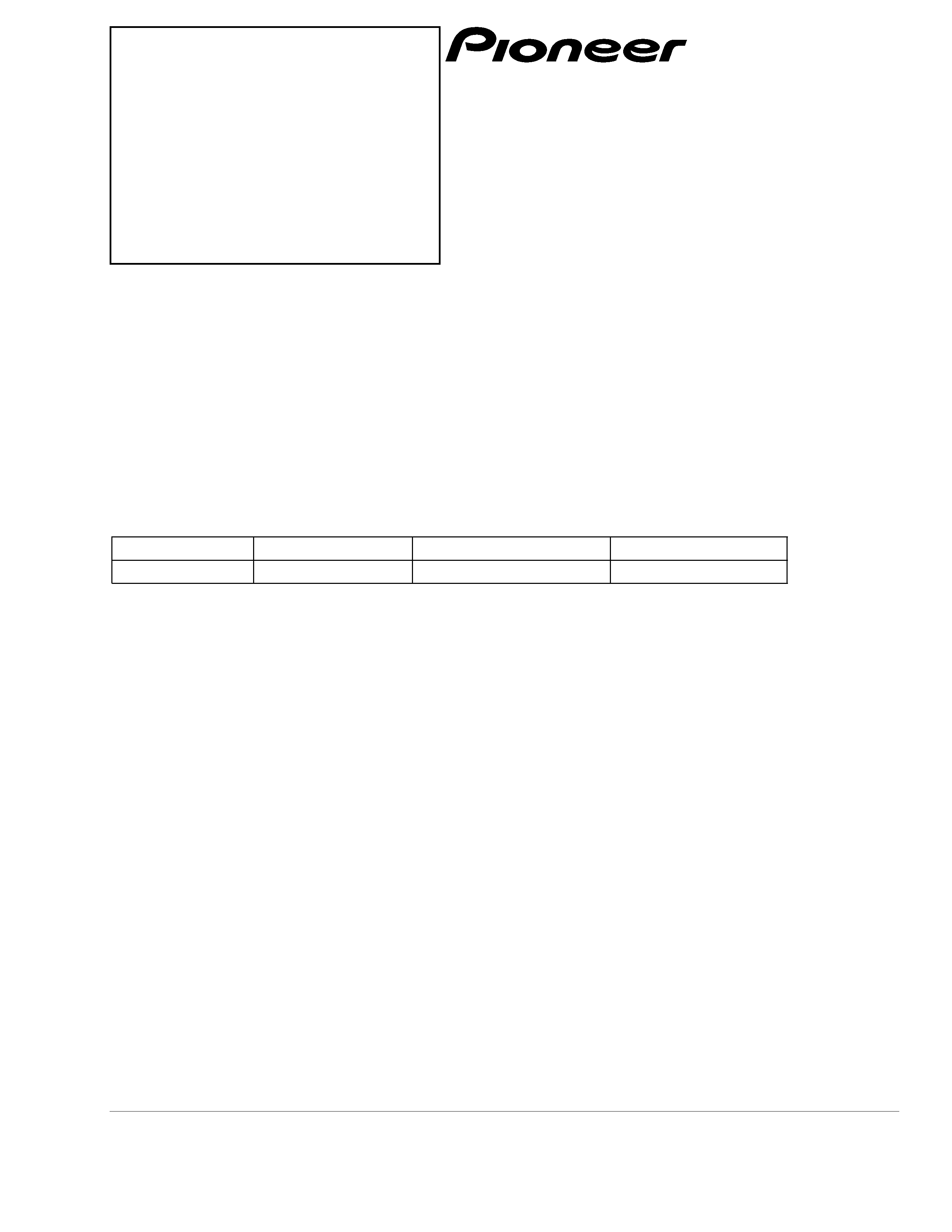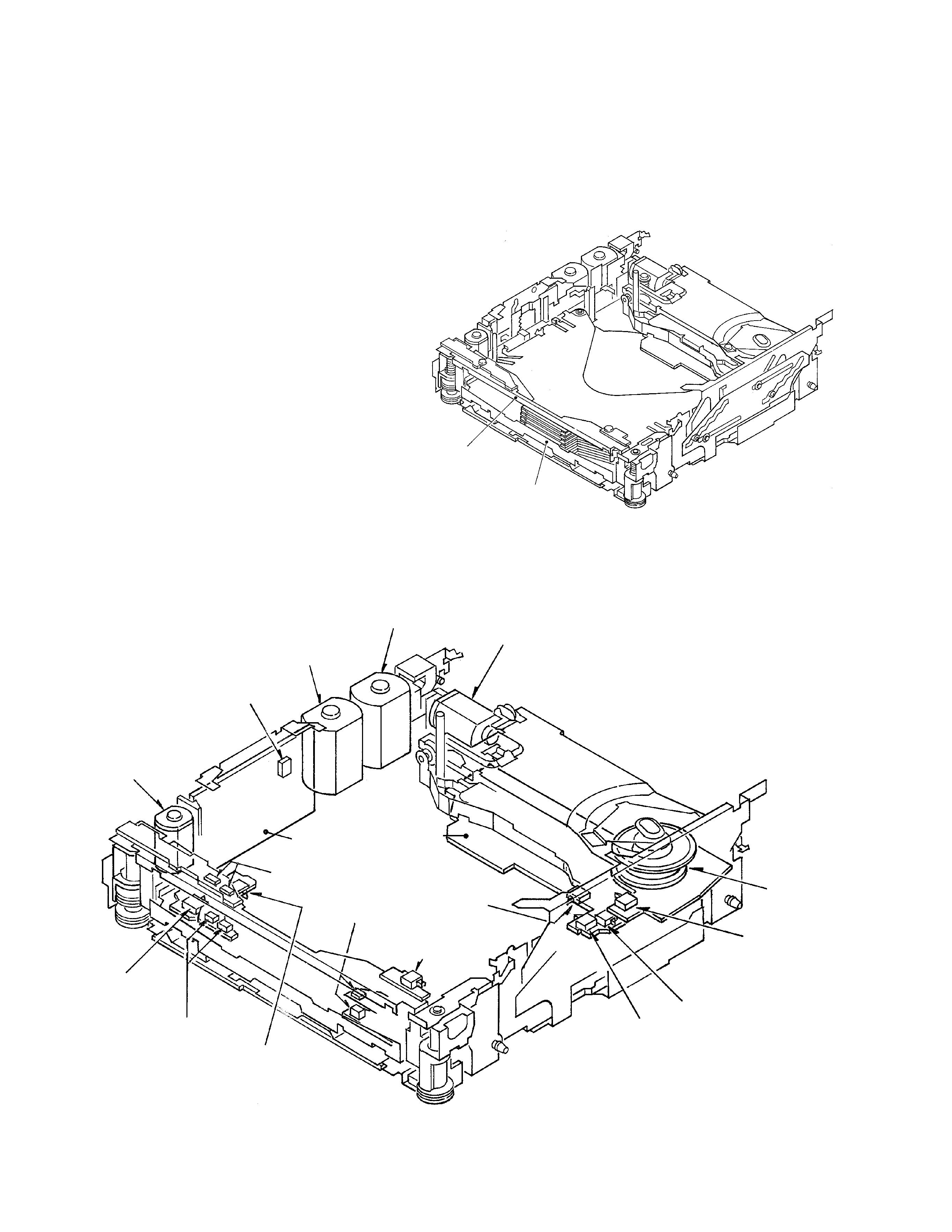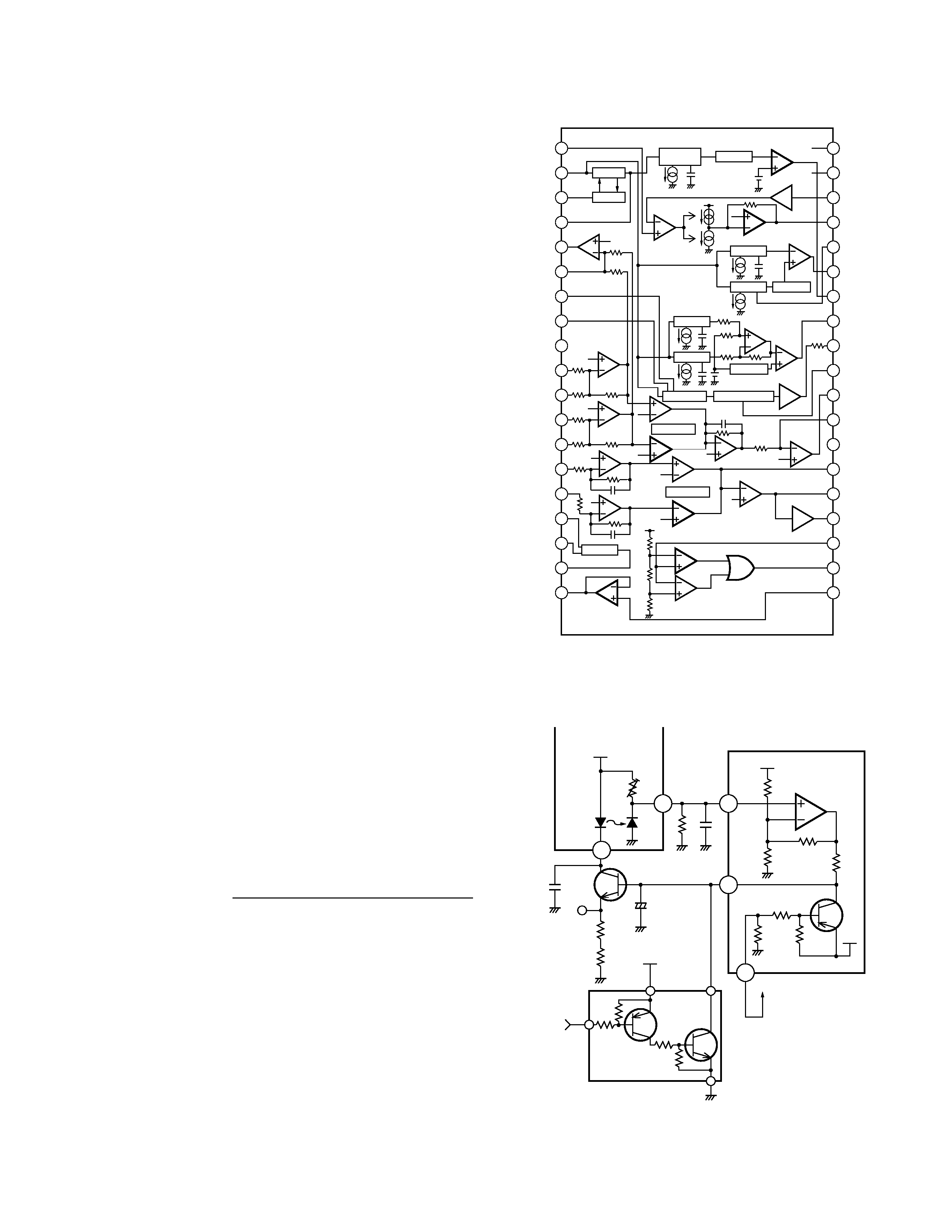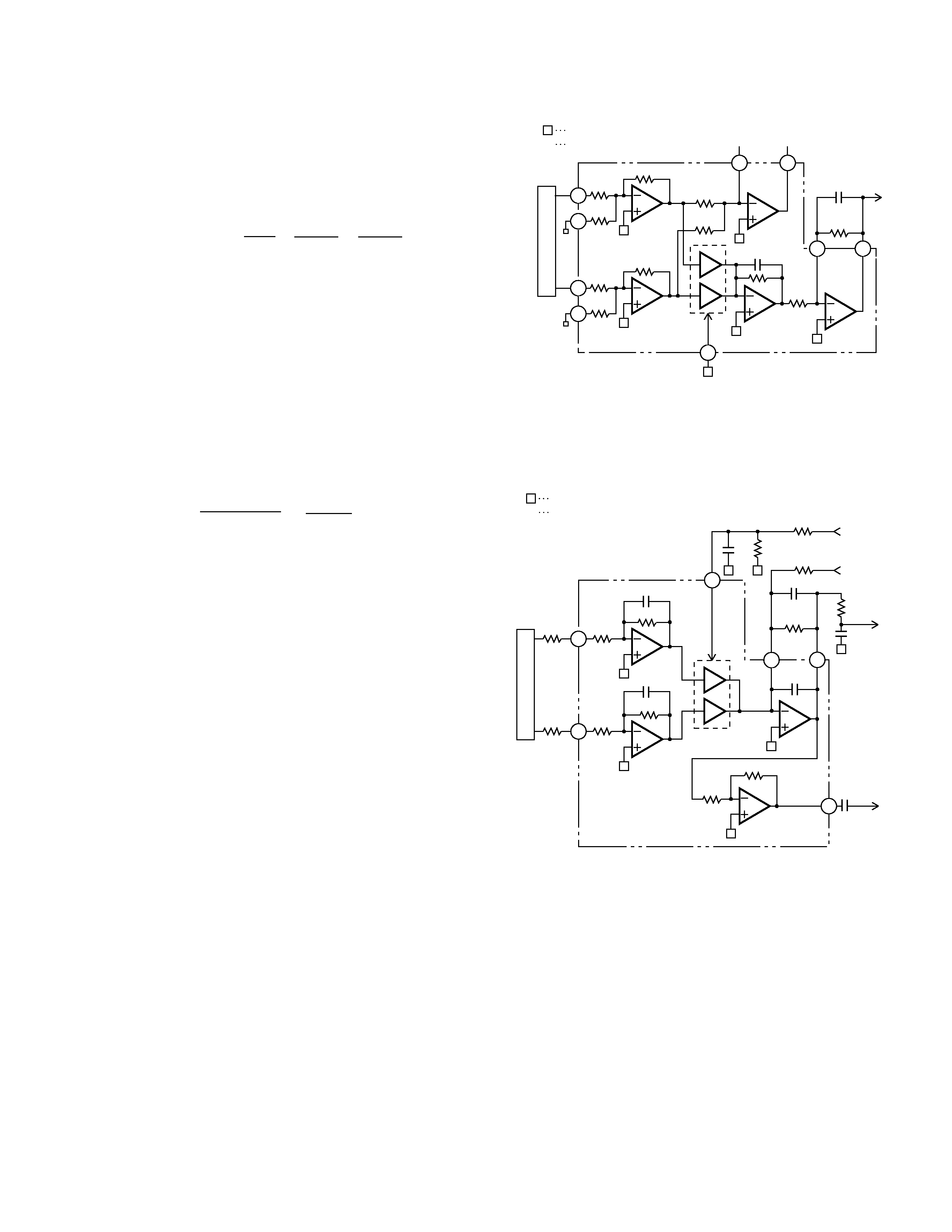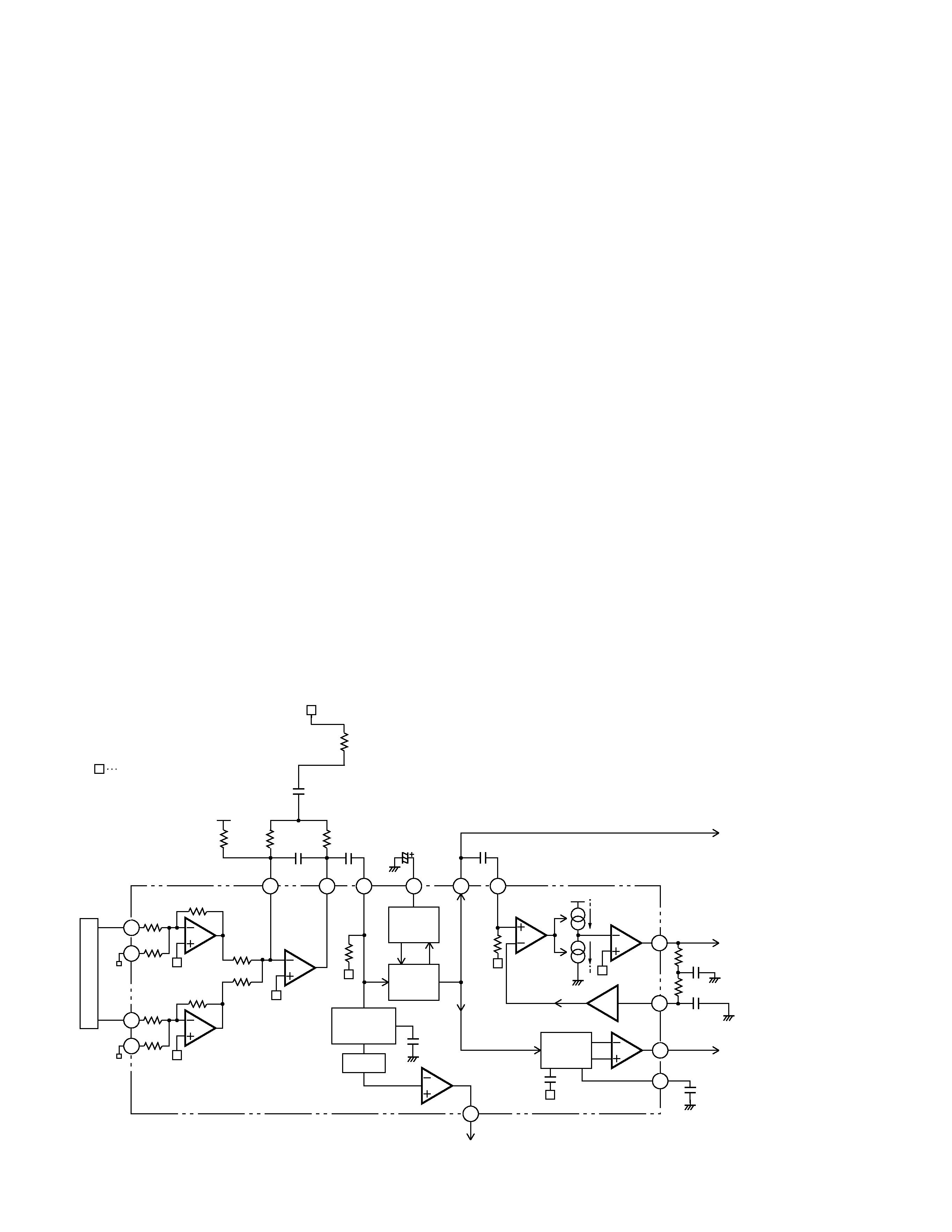
4
CX-890
2) RF amplifier and RF AGC amplifier
Photodetector outputs (A+C) and (B+D) are added,
amplified and equalized in IC101, and output to the RFI
terminal as RF signal. (Eye pattern can be checked at
this terminal.)
Low-frequency components of voltage RFI is:
RFI = ((A + C) + (B + D)) x 3.22
where R111 is offset resistor to keep RFI signal within
the output range of the preamplifier. RFI signal is goes
under AC coupling, and is input to Pin 4 (RFIN termi-
nal).
IC101 contains an RF AGC circuit. RFO output from Pin
2 is maintained to a constant level (1.2 ±0.2 Vp-p). The
RFO signal is used in the EFM, DFCT, and MIRR circuits.
3) EFM circuit
The EFM circuit converts RF signal into digital signals of
"0" and "1". RFO signal after AC coupling is input to Pin
1, and supplied to the EFM circuit.
Asymmetry caused during manufacturing of discs can-
not be eliminated solely by AC coupling. Therefore, the
system controls the reference voltage ASY of the EFM
comparator by using the fact that probability to gener-
ate "0" and "1" is 50% in EFM signal. This reference volt-
age ASY is generated by output from the EFM com-
parator through L.P.F. EFM signal is output from Pin 35.
As signal level, amplification is 2.5 Vp-p around
REFOUT.
4) DFCT (defect) circuit
DFCT signal detects mirror defect in discs, and is output
from Pin 33. The system outputs "H" when a mirror
defect is detected.
If disc is soiled, the system determines it as lack of mir-
ror. Therefore, the system inputs the DFCT signal out-
put to the HOLD terminal of servo LSI. Focus and track-
ing servo drives change to Hold status only when DFCT
output is in "H" so that performance of the system upon
detection of defect can be improved.
5) RFOK circuit
The RFOK circuit outputs signal to show the timing of
focus closing servo, as well as the status of focus clos-
ing during playback. The signal is output from Pin 32.
The system inputs the RFOK signal output to the RFOK
terminal of servo LSI. The servo LSI issues Focus Close
command. The system outputs signal in "H" during
focus closing and playback.
CN101
13
6
DETECT
13
11
10
10k
20k
9.3k
RFI
+5V
R111
27k
Vcc
×12
ASY
12
20k
(RF AGC)
AGC
RF
ENVELOPE
HPF
VDC
RFOK
20k
33
36
35
34
PEAK
DEFECT
EFM
UPC2572GS
A+C
10k
B+D
9.3k
20k
10k
10k
R105
6.8k
C125 5pF
C105
24pF
R125
0R0
R104
8.2k
RFIN
C107
4.7
µF/35V
C122
0.1
µF
C106
RFO
REFOUT (+2.5V)
DEFECT
BOTTOM
R107 8.2k
R106 18k
C111 3300pF
C110
C112 0.047
µF
6
54
3
21
32
0.1
µF
2200pF
HOLD
Fig. 3 RF AMP, RF AGC, EFM, DFCT, RFOK Circuit







